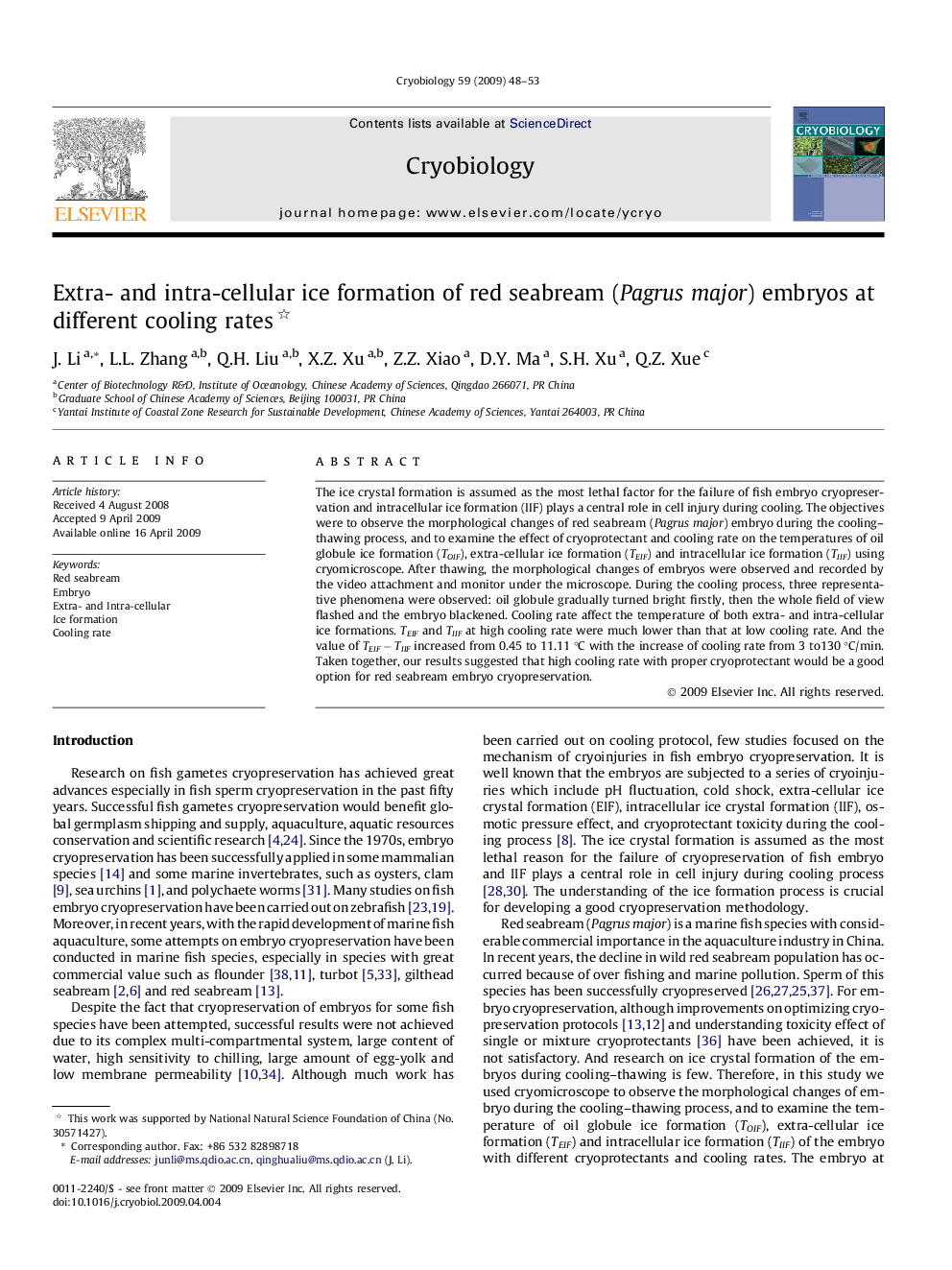| Article ID | Journal | Published Year | Pages | File Type |
|---|---|---|---|---|
| 2168849 | Cryobiology | 2009 | 6 Pages |
The ice crystal formation is assumed as the most lethal factor for the failure of fish embryo cryopreservation and intracellular ice formation (IIF) plays a central role in cell injury during cooling. The objectives were to observe the morphological changes of red seabream (Pagrus major) embryo during the cooling–thawing process, and to examine the effect of cryoprotectant and cooling rate on the temperatures of oil globule ice formation (TOIF), extra-cellular ice formation (TEIF) and intracellular ice formation (TIIF) using cryomicroscope. After thawing, the morphological changes of embryos were observed and recorded by the video attachment and monitor under the microscope. During the cooling process, three representative phenomena were observed: oil globule gradually turned bright firstly, then the whole field of view flashed and the embryo blackened. Cooling rate affect the temperature of both extra- and intra-cellular ice formations. TEIF and TIIF at high cooling rate were much lower than that at low cooling rate. And the value of TEIF − TIIF increased from 0.45 to 11.11 °C with the increase of cooling rate from 3 to130 °C/min. Taken together, our results suggested that high cooling rate with proper cryoprotectant would be a good option for red seabream embryo cryopreservation.
